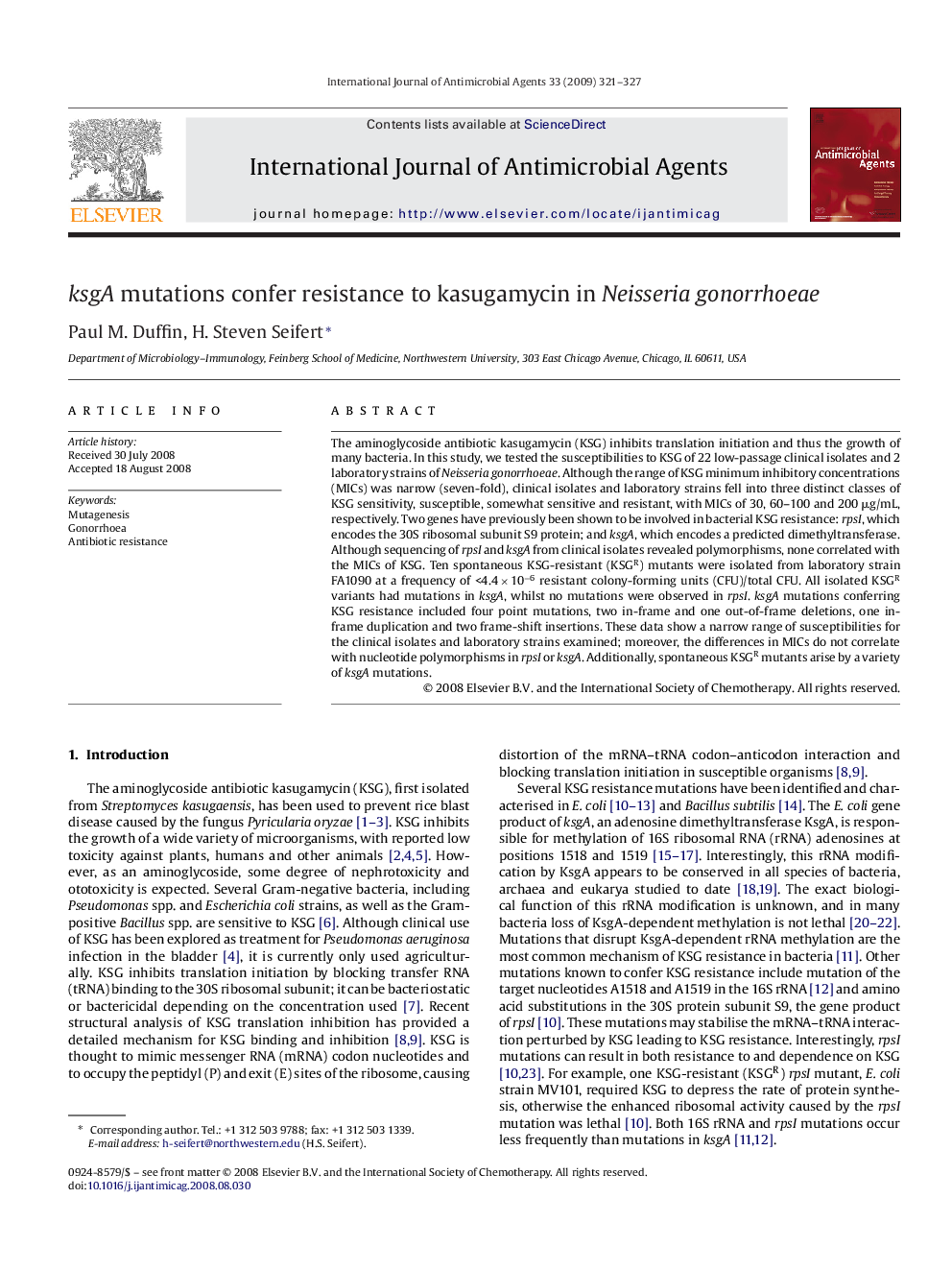| کد مقاله | کد نشریه | سال انتشار | مقاله انگلیسی | نسخه تمام متن |
|---|---|---|---|---|
| 3359873 | 1591854 | 2009 | 7 صفحه PDF | دانلود رایگان |

The aminoglycoside antibiotic kasugamycin (KSG) inhibits translation initiation and thus the growth of many bacteria. In this study, we tested the susceptibilities to KSG of 22 low-passage clinical isolates and 2 laboratory strains of Neisseria gonorrhoeae. Although the range of KSG minimum inhibitory concentrations (MICs) was narrow (seven-fold), clinical isolates and laboratory strains fell into three distinct classes of KSG sensitivity, susceptible, somewhat sensitive and resistant, with MICs of 30, 60–100 and 200 μg/mL, respectively. Two genes have previously been shown to be involved in bacterial KSG resistance: rpsI, which encodes the 30S ribosomal subunit S9 protein; and ksgA, which encodes a predicted dimethyltransferase. Although sequencing of rpsI and ksgA from clinical isolates revealed polymorphisms, none correlated with the MICs of KSG. Ten spontaneous KSG-resistant (KSGR) mutants were isolated from laboratory strain FA1090 at a frequency of <4.4 × 10−6 resistant colony-forming units (CFU)/total CFU. All isolated KSGR variants had mutations in ksgA, whilst no mutations were observed in rpsI. ksgA mutations conferring KSG resistance included four point mutations, two in-frame and one out-of-frame deletions, one in-frame duplication and two frame-shift insertions. These data show a narrow range of susceptibilities for the clinical isolates and laboratory strains examined; moreover, the differences in MICs do not correlate with nucleotide polymorphisms in rpsI or ksgA. Additionally, spontaneous KSGR mutants arise by a variety of ksgA mutations.
Journal: International Journal of Antimicrobial Agents - Volume 33, Issue 4, April 2009, Pages 321–327